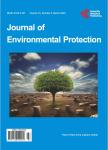Polychlorinated Dibenzofurans and Dibenzo-p-Dioxin in Tree Bark from an Industrialized Area: What the 2,3,7,8-Cl Substituted Congeners Tell Us, and What Is Missing
Polychlorinated Dibenzofurans and Dibenzo-p-Dioxin in Tree Bark from an Industrialized Area: What the 2,3,7,8-Cl Substituted Congeners Tell Us, and What Is Missing作者机构:Hermanson & Associates LLC Minneapolis USA University Center on Svalbard Longyearbyen Norway Energy & Geosciences Institute University of Utah Salt Lake City USA
出 版 物:《Journal of Environmental Protection》 (环境保护(英文))
年 卷 期:2016年第7卷第3期
页 面:351-357页
学科分类:081704[工学-应用化学] 07[理学] 08[工学] 0817[工学-化学工程与技术] 070303[理学-有机化学] 0703[理学-化学]
主 题:Tree Bark Polychlorinated Dibenzofurans Polychlorinated Dibenzo-p-Dioxins Principal Components Analysis
摘 要:We analyzed polychlorinated dibenzofurans (PCDF) and dibenzo-p-dioxins (PCDD) in 27 tree bark samples from the industrialized area near Sauget, Illinois, USA. The trees were located within 4 km of the W. G. Krummrich (WGK) plant, the oldest and largest chemical plant in Sauget, with 24 of 27 samples collected from residential areas. The percent of total PCDF or PCDD profiles of ten 2,3,7,8- Cl substituted PCDF and seven PCDD congeners is homogeneous: 90% of the variance among the samples is explained by 3 eigenvalues in a principal components analysis. The homogeneity of the data suggests that samples were affected by similar types of sources which may have been influenced by electric power generation, chemical waste incineration, and large-scale thermal production of chlorinated chemicals. Quantitatively, the 2,3,7,8-Cl substituted congener analysis does not account for 90% of the concentration of tetra- and penta-Cl homologues and 80% of hexa-Cl and 50% of hepta-Cl homologues. The World Health Organization stated during establishment of toxic equivalence factors (TEF, 2005 version) that calculation of toxic equivalents (TEQs) is not suitable for abiotic matrices, such as tree bark, which are not involved in human exposures. Our results show that the non-2,3,7,8-Cl substituted congeners have high concentrations and should be included in analysis.



